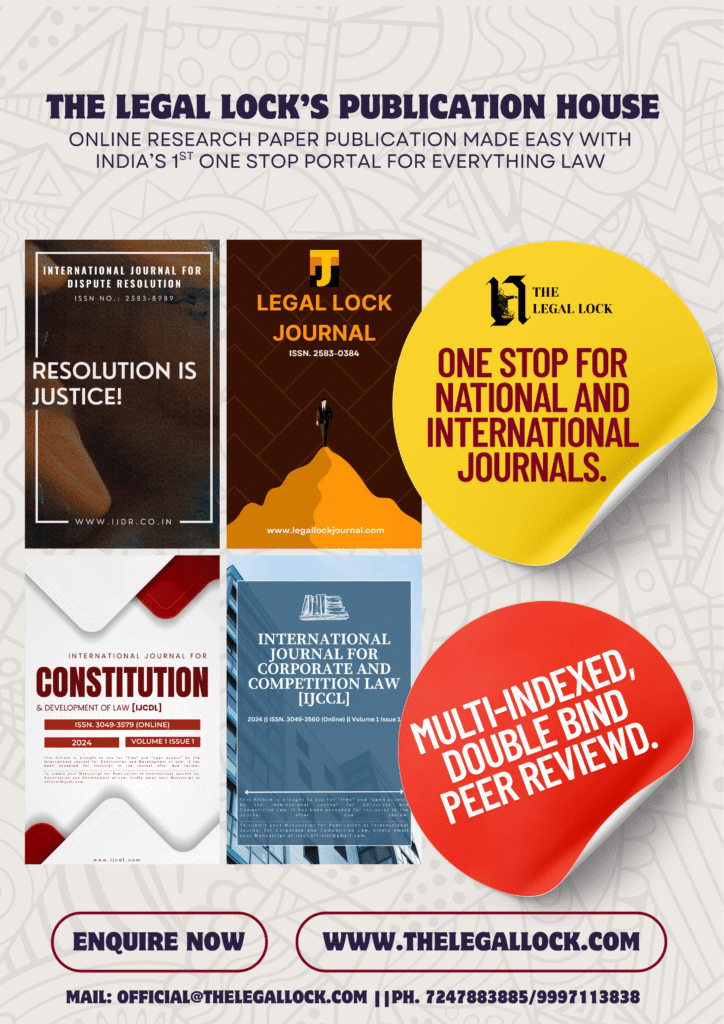CASE BRIEF: E.N. PROJECT AND ENGINEERING INDUSTRIES LTD. V. KVT ELECTRICAL PROJECT AND ENGINEERING

| CASE NAME | E.N. Project and Engineering Industries Ltd. v. KVT Electrical Project and Engineering |
| CITATION | MANU/DE/2769/2021, MANU/DEOR/128632/2022 |
| COURT | Delhi High Court |
| Bench | Manoj Kumar Ohri, J., Amit Bansal,J |
| Date of Decision | 12 Oct’ 2021, 25 Aug’ 2022 |
INTRODUCTION
This case addresses the issue of design infringement in the manufacturing of cable trays. The plaintiff, E.N. Project and Engineering Industries Ltd., filed a suit seeking permanent injunction against the defendants for alleged infringement of their registered design. The case examines important aspects of design law, including the criteria for registration under the Designs Act of 2000, the concept of “prior publication,” and the burden of proof in design infringement cases.
The dispute raises significant questions about the protection of industrial designs in India, particularly in cases where ex-distributors begin competing businesses. The case is noteworthy for its comprehensive examination of what constitutes “prior publication” in design law and how the burden of proof shifts between parties in design infringement cases. It also addresses the evolving jurisprudence on territorial jurisdiction in the age of e-commerce, making it a significant precedent for future design infringement cases involving online sales.
FACTS
The plaintiff is a manufacturer of cable trays used in various industries, including food processing, dairies, bottling plants, metro railways, airports, malls, and high-rise buildings.
- The plaintiff holds a registration under Section 6 of the Designs Act, 2000, since March 5, 2010, for their cable tray design.
- The defendants, who were the plaintiff’s erstwhile distributors, began manufacturing and selling cable trays that allegedly imitated the plaintiff’s registered design.
- The plaintiff obtained an interim injunction on December 18, 2019, from the Sessions Court.
- The defendants filed an application seeking vacation of the interim injunction order.
- The case was transferred to the High Court from the Sessions Court under Section 22(4) of the Designs Act due to the defendants’ objections under Section 19 of the Act.
ISSUES
- Whether the plaintiff’s registered design qualified for registration under Section 6 of the Designs Act based on parameters laid down in Section 4.
- Whether the defendants successfully established “prior publication” of the design to disqualify it under Section 4(b) of the Act.
- Whether the Delhi High Court had territorial jurisdiction to hear the case.
- Should the interim injunction granted be vacated?
ARGUMENTS
Plaintiff’s Arguments:
- The design was new, original, and novel, satisfying prerequisites for registration under Section 6 of the Act.
- Their design had unique specifications and configuration patterns that distinguished it from other cable tray designs.
- The defendants, being ex-distributors, had copied their design in bad faith.
- The defendants’ product was an exact replica of their registered design.
Defendants’ Arguments:
- The design lacked novelty and originality as it was previously published through:
-NEMA Standards Publications
-Cablofil website
-YouTube videos
-Internet Archive Wayback Machine
-Their own sales invoices
- The design was generic and widely used across industries.
- The design could not have been granted registration under Section 4 of the Act.
- Challenged the territorial jurisdiction of the Delhi High Court.
DECISION
The Delhi High Court examined the alleged infringement of a registered design for cable trays, weighing both the merits of the registration and the conduct of the parties involved. The primary issue before the Court was whether to vacate an interim injunction previously granted against the defendants, who were manufacturing allegedly infringing cable trays.
The Court first addressed the defendants’ challenge to the plaintiff’s design registration based on claims of prior publication. After examining the evidence presented, including NEMA Standards Publications, website archives, YouTube videos, and sales invoices, the Court found that the defendants had failed to establish prior publication of the design. The Court emphasized that installation guidelines or general industry standards did not constitute prior publication of a specific design.
Through visual comparison, the Court found striking similarities between the plaintiff’s and defendants’ products, noting that measurements, spacing, and dimensions were exactly replicated. The Court accepted an expert report confirming these similarities, though clarifying that expert opinion was considered primarily for comparison purposes rather than for determining the novelty of the design.
The Court rejected the defendants’ jurisdictional challenge, upholding the Delhi High Court’s jurisdiction based on the accessibility of the infringing products through online sales in Delhi. This determination aligned with established precedents regarding e-commerce jurisdiction in intellectual property cases.
The Court placed significant weight on the fact that the defendants were former distributors of the plaintiff, finding their exact copying of the design to be inequitable conduct. Based on these findings, the Court dismissed the defendant’s application for vacation of the interim injunction and made the previous interim order absolute while noting that these observations were prima facie in nature and would not prejudice the final disposal of the suit.
LATEST ORDER
In a subsequent development on August 25, 2022, the matter reached its conclusion when the plaintiff approached the Delhi High Court with an application under Order XXIII Rule 1 of the Code of Civil Procedure, 1908 (CPC), seeking permission to withdraw the present suit. The application was heard by Justice Amit Bansal, who noted that the counsel for the defendants raised no objection to the plaintiff’s request for withdrawal. Consequently, the Court allowed the application, and the suit, along with all pending applications, was dismissed as withdrawn. This order effectively brought an end to the litigation that had commenced with questions of design infringement and had progressed through various interim orders and detailed considerations of design law principles.
ANALYSIS
India’s design law jurisprudence benefits significantly from the E.N. Project decision, especially in its treatment of design infringement by former business associates. The Court’s ruling establishes important guidelines for protecting registered designs while balancing the need for fair competition in the manufacturing sector.
The Court’s approach to evaluating evidence of prior publication provides crucial guidance for future cases. While acknowledging that designs may share common elements, particularly in industrial applications, the Court emphasized that challengers must provide concrete evidence of prior publication. This interpretation helps clarify the standards for both protecting original designs and challenging registrations that may lack novelty.
A sophisticated understanding of design protection is evident in the Court’s methodology. It recognizes that while industrial designs may incorporate common elements, the specific arrangement and presentation of these elements can qualify for protection. This interpretation offers valuable guidance for manufacturers and designers, helping them understand the scope of their rights while ensuring that basic industrial features remain available for general use.
The decision provides important procedural clarification regarding the burden of proof in design infringement cases. It confirms that while initial registration requires proving novelty, once registered, the burden shifts to challengers to prove grounds for invalidation. This framework strengthens the position of registered design holders while maintaining appropriate avenues for legitimate challenges.
The Court’s consideration of the defendants’ status as former distributors establishes important precedents for cases involving business relationships. The ruling suggests that prior business relationships create additional obligations regarding intellectual property rights, particularly when exact copying is alleged. This interpretation helps protect design holders from unfair competition while maintaining reasonable standards for industry participants.
The judgment also modernizes the approach to territorial jurisdiction in design infringement cases, acknowledging the realities of e-commerce. By confirming jurisdiction in places where infringing goods can be purchased online, the Court adapts design law to contemporary business practices while ensuring effective enforcement of design rights. This practical approach provides clear guidelines for future cases involving online sales and distribution of allegedly infringing products.








